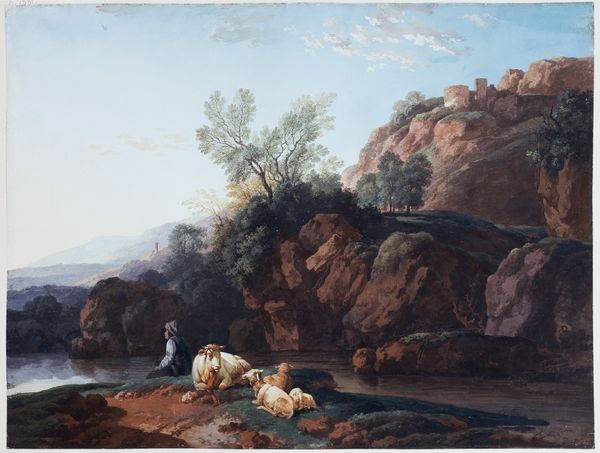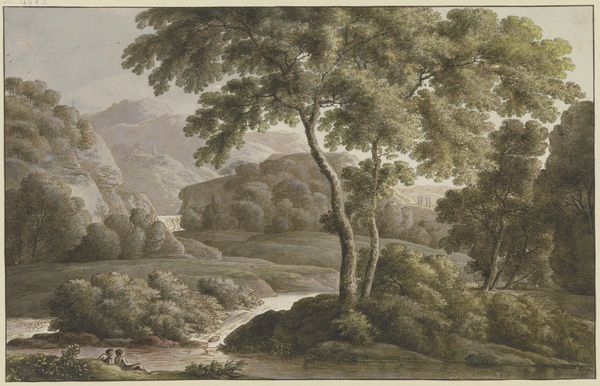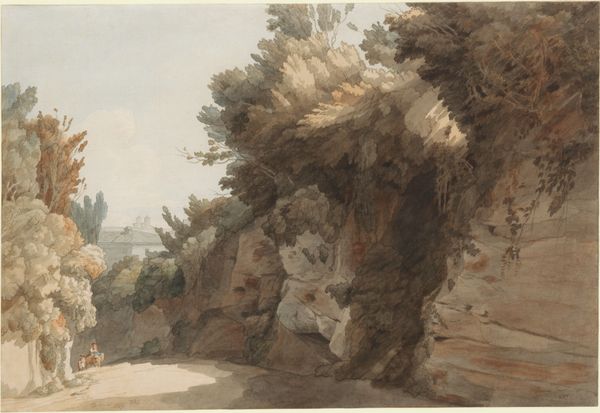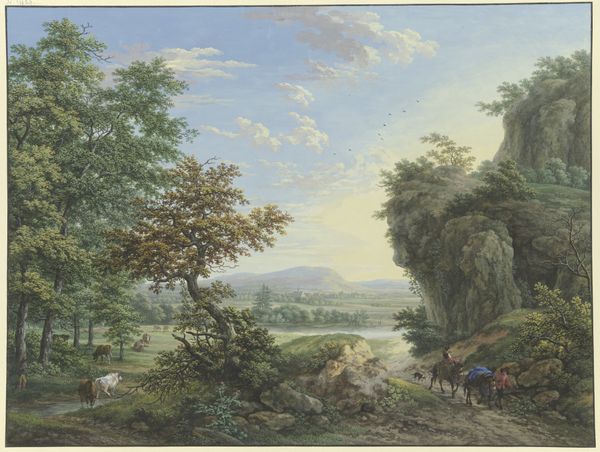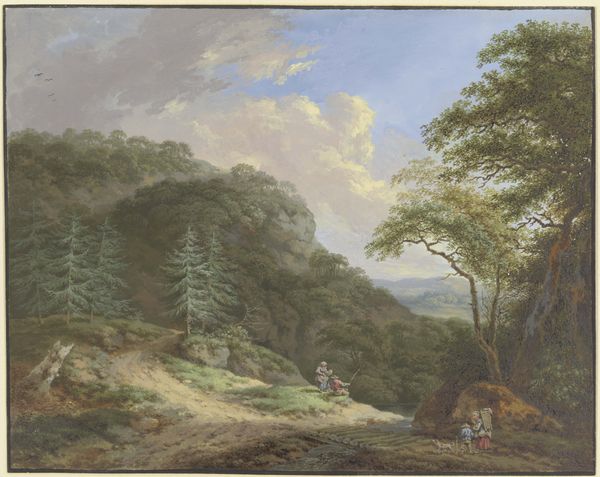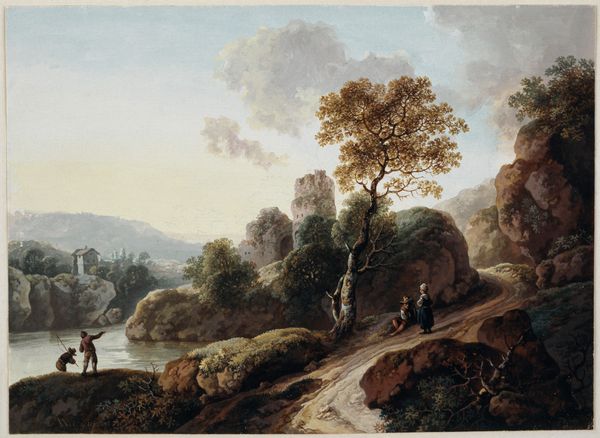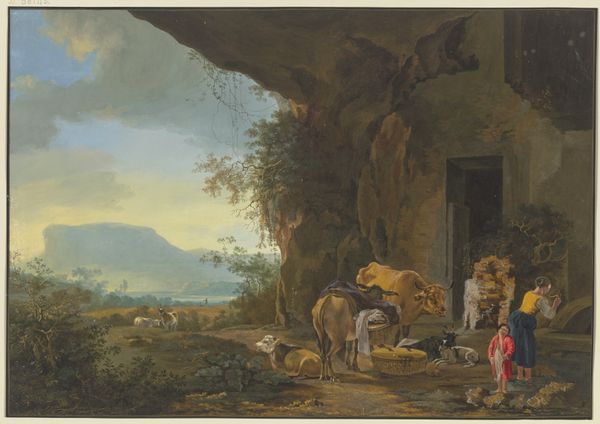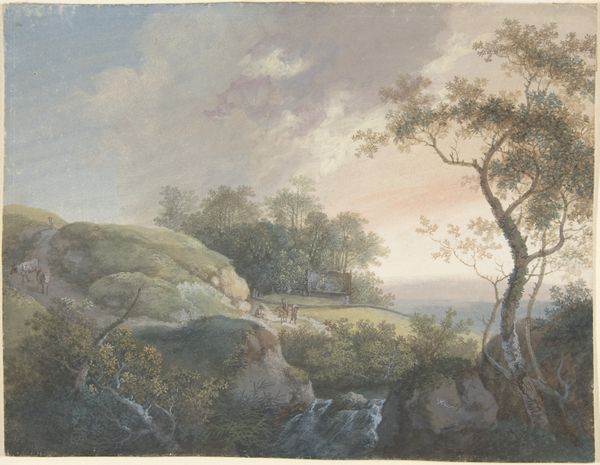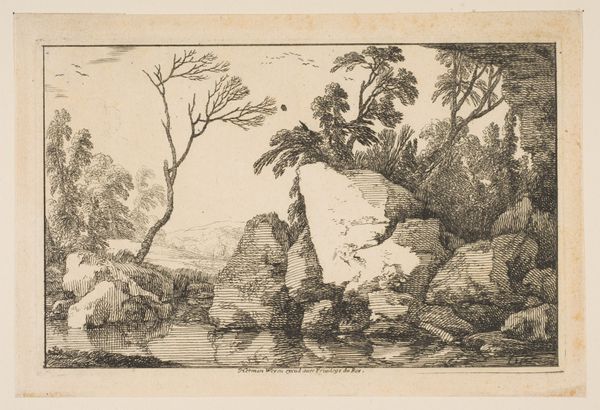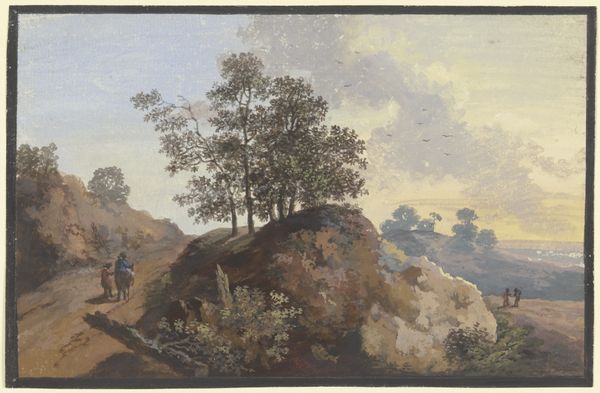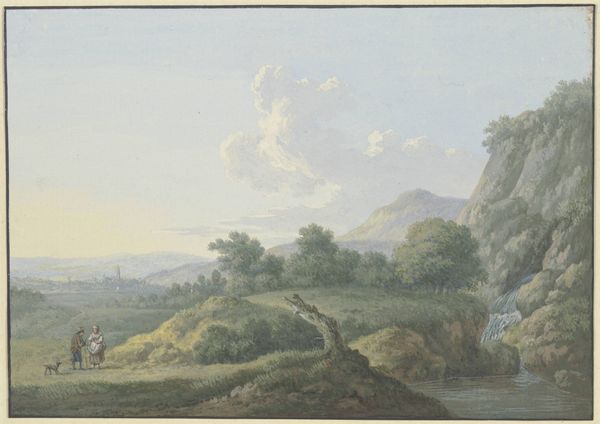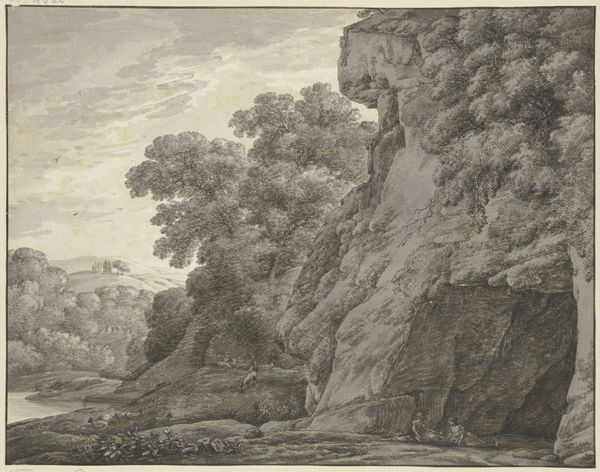
Felsige Gegend mit einem Hirten, zwei Kühen, zwei Schafen und einer Ziege 1767
0:00
0:00
Copyright: Public Domain
Curator: This watercolor and tempera painting before us is entitled "Felsige Gegend mit einem Hirten, zwei Kühen, zwei Schafen und einer Ziege," or "Rocky Landscape with a Shepherd, Two Cows, Two Sheep and a Goat" by Christian Wilhelm Ernst Dietrich. It was completed around 1767. Editor: It’s…pastoral. Almost overwhelmingly so. There’s a sense of rest and a clear hierarchy. The strong diagonals lead the eye smoothly through the composition, and the careful placement of the figures – man and beast – generates an almost idyllic repose. Curator: Dietrich's process reveals a fascinating dialogue between artistic skill and the social realities of art production at the time. His skilled manipulation of watercolor and tempera was aimed at creating appealing scenes for bourgeois consumption. Editor: True, but the handling of light, see the way it delicately touches the leaves on the scraggly tree, really activates the scene, lending it a kind of spiritual tranquility. There's a structured play between light and shadow here. Curator: I am also curious about the commercial aspect of landscapes at that time and how prints affected it. Artists began developing ways to easily make their work reproducible. So Dietrich may well have designed this piece to circulate on a mass scale. Editor: That's quite possible, however, the composition and tonal range suggest a highly refined sensibility. Think about how the coolness of the distant mountains plays against the warmer hues of the foreground rocks, creating spatial depth and harmony. The semiotics here are remarkable. Curator: Yet, wouldn't it be compelling to explore the economic exchanges between the artist and the patrons? Who owned the livestock featured here, what were their grazing rights, and how are those power dynamics reflected in art's very making? Editor: Undoubtedly crucial, but let's also acknowledge the formal devices at play. Dietrich's brushwork, though delicate, contributes to a robust overall design. One needs that balance between what art depicts and how it makes you see. Curator: In observing all of this, I'm left reflecting on the relationship between the material conditions and our aesthetic appreciations. Editor: And for me, reflecting on the intricate arrangements can indeed unlock hidden qualities within this serene scene.
Comments
No comments
Be the first to comment and join the conversation on the ultimate creative platform.
